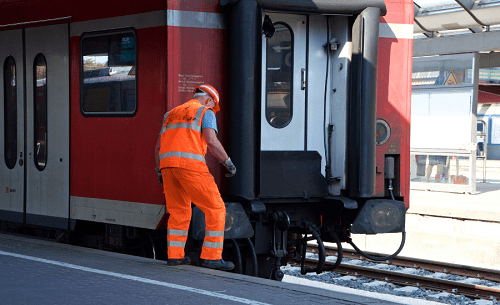
8.25.20 – Security
As the pandemic continues to interrupt business as usual, companies are exploring new ways to cope with both the mandated and voluntary restrictions to their operations. One way in which business models have adapted to keep costs under control is by utilizing more lone workers for opening, closing, third shifts, curbside deliveries and other customer interactions outside of the premises. While this has helped many organizations trim costs, it has also exposed lone workers to greater risks.
Restaurants and retailers are increasingly relying on employees to make home deliveries to avoid the use of expensive third-party delivery service providers. Many banks and health care clinics are now running branches with a lone employee or with limited staff with extended work hours. Similarly, hotel and maintenance staff frequently work alone and are having to deal with low occupancy rates. The cannabis industry also has lone workers, sometimes dealing with large cash transactions. As the pandemic continues, it’s important for businesses to evaluate options to secure and monitor the safety of lone workers, while also ensuring that they can carry out their duties with confidence.
Developing a lone worker safety policy
Organizations that don’t have a lone worker policy in place should consider implementing one as soon as possible. When rolling out a lone worker safety policy, consider identifying the purpose of the policy and how it aligns with the overall safety culture of the organization. A lone worker policy should clearly communicate the risks presented when an employee works alone. It should identify the responsibilities of each person in this situation and describe the required actions intended to minimize those risks. The policy should define standard operating procedures and cover training of employees to develop understanding and skills required in their job roles. Most importantly, the policy should include a synopsis of the right security technologies deployed and an emergency communications plan that all employees should know how to utilize should anyone feel threatened.
Decreasing risk for lone workers
While many businesses have video security systems in place, many were not installed with current working conditions in mind. Security cameras now need to have coverage that extends to curbside delivery areas for example. Likewise, employing a full-time security guard is not sustainable for many businesses still struggling to stay open. When providing realistic options to lone workers, it’s important that any solution be simple and robust enough that employees will see the value and choose to use it. It should require no installation or configuration by the user.
Solutions for lone worker monitoring
There is a new breed of smart, wearable and discreet personal protection devices that enable businesses to add another layer of protection for their employees when working alone. These wearable personal protection devices can easily be worn on a lanyard, belt, vest, jacket, or pants. Unlike phone-based apps that take several steps to engage and can actually escalate a situation if an assailant suspects the victim is calling for help, a dedicated personal safety monitoring device is always on and includes a single-push panic button that silently dispatches police and connects to a live monitoring service in seconds.
A properly designed personal protection device delivers comprehensive situational awareness by sending time and location stamped GPS coordinates to authorities. It also opens a two-way audio communication channel with the employee and captures evidentiary grade photos to provide hard evidence for law enforcement. Being cellular based, there’s no limit to how far an employee can be from the business which means that it is perfect for curbside delivery and even home delivery use cases.
Lone workers don’t have to be completely alone
Having an experienced security professional and law enforcement available at the touch of a button can boost morale and give lone workers the confidence to do their jobs without taking on unnecessary risk. Today, wearable personal protection monitoring solutions can be directly integrated with interactive 24/7 Command & Command Centers.
These personal protection devices can also work in conjunction with a fully interactive video and two-way audio security system. An interactive monitoring solution further augments a personal protection device by offering remote security escorts, remote tours, video verified alarms and even operations compliance services to organizations. With more camera eyes and ears on the ground, the opportunity to de-escalate situations further increases.
These new services are a critical component in increasing safety measures for employees and customers and should be an essential component of a comprehensive business security strategy.
